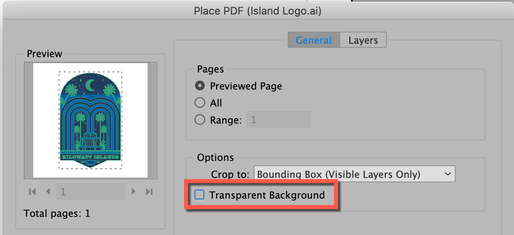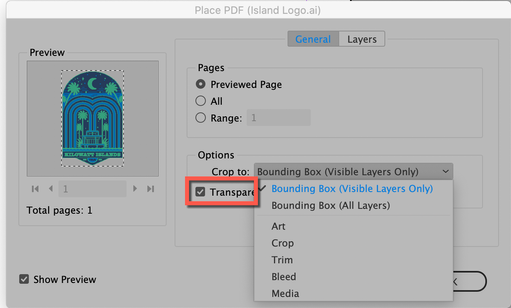Copy link to clipboard
Copied
Will Adobe continue to support the .eps file format in future application software?
I have heard rumors regarding this issue and would like clarification. Thanks
 2 Correct answers
2 Correct answers
I have not heard those rumors, but Microsoft stopped supporting EPS in Microsoft Office four years ago:
"Because of a security vulnerability in EPS files, Office 2019, Office 2016, Office 2013, Office 2010, and Microsoft 365 have turned off the ability to insert EPS files into Office documents. This change is effective as of the April 11, 2017, security update."
~
...Whether Adobe decides not to support .eps in the future is probably not as important as realizing that for all intents and purposes .eps is an obsolete format. It has not been updated since the 1990s and has never had the full integration with InDesign for imported objects that .ai or .pdf has. Is there some specific reason that you still need to use .eps?
Explore related tutorials & articles
Copy link to clipboard
Copied
Where did you hear those rumors?
Copy link to clipboard
Copied
Collegues. I will pass the correct information along to them.
Copy link to clipboard
Copied
Maybe your colleagues can tell you how they got that information.
Copy link to clipboard
Copied
I have not heard those rumors, but Microsoft stopped supporting EPS in Microsoft Office four years ago:
"Because of a security vulnerability in EPS files, Office 2019, Office 2016, Office 2013, Office 2010, and Microsoft 365 have turned off the ability to insert EPS files into Office documents. This change is effective as of the April 11, 2017, security update."
~ Jane
Copy link to clipboard
Copied
Hi Jane,
Thanks for the clarification. So the eps extention will work with Illustrator, InDesign and Photoshop in the future.
Copy link to clipboard
Copied
@Jill5C46 wrote:
\So the eps extention will work with Illustrator, InDesign and Photoshop in the future.
Neither Ton nor I said that. What we said is that we had not heard those rumors and I added that Microsoft has stopped support for EPS due to unnamed security issues. As users, we do not know what Adobe will do until they announce it.
~ Jane
Copy link to clipboard
Copied
Whether Adobe decides not to support .eps in the future is probably not as important as realizing that for all intents and purposes .eps is an obsolete format. It has not been updated since the 1990s and has never had the full integration with InDesign for imported objects that .ai or .pdf has. Is there some specific reason that you still need to use .eps?
Copy link to clipboard
Copied
Hi Bill,
I have a follow-up queston to this thread, specifically in regard to logo suites that get distributed to multiple people, and it's use in InDesign (not Office). You say EPS is obsolete, but how else can you create a vector file with a transparent background when imported into InDesign? I know you could resave as a PSD, but it can't be increased in size so lacks optimal flexibility.
Thanks,
Laura
Copy link to clipboard
Copied
Create an Illustrator file and Place the native Illustrator file into InDesign.
Jane
Copy link to clipboard
Copied
Thanks so much for the quick reply! I've tried this but it lacks the transparent background. When I import into ID it has a white background even if my ID box is set to transparent. I'm using the most up-to-date version of AI and when saving there aren't any transparency options available (there are some greyed out).
Any thoughts?
Thanks,
Laura
Copy link to clipboard
Copied
Hi @LauraFig
Two things:
- Illustrator files are transparent by default, but confirm that yours does not have a white rectangle as the bottom object. Check the layers panel if necessary.
- When you place the file into InDesign, use Show Options. You can do this with the Checkbox in the dialog or this way:
File > Place > Select the Illustrator file > Hold down Shift and keep it down as you click Open
In the Show Options dialog there is a checkbox to show transparency.
I'm on my iPad now with my morning coffee, so if you don't see it I can take screen shots from my computer. Let me know.
Jane
Copy link to clipboard
Copied
Jane,
"I'm on my iPad now with my morning coffee,"
It seems that the iPad (size) is underestimated; and be careful if you put the tumbler down, lest it tumbles.
Sorry, it was stronger than I.
Copy link to clipboard
Copied
In InDesign: File > Place > Show Import Options.
On a Mac you toggle visibility of these three options by clicking the Options button.
When Transparent Background is Unchecked, the Illustrator image is opaque.
When Transparent Background is enabled, you will get transparency (if it exists in the Illustrator file.) The Show Options dialog includes other options for placing the file.
Jane
Copy link to clipboard
Copied
That's interesting to see, and I really apprciate this tip, but it seems unnecessarily complicated. I would really hesitate to give AI files to clients instead of EPS since their skill levels vary. If it was just me making the file for myself i might do this, but I often make logo files for clients and EPS is my go to, along with JPEG and PNG so they have a good variety of files. I always provide a user guide, but I can't imagine clients who aren't full-time designers following these steps. If they get some understanding of when to use which file I consider it a major victory!
So can you please explain the advantage of using AI files, versus EPS files that place as transparent without any fuss? And is there any major downside to using EPS files, especially for the purpose noted above.
Thanks,
Laura
Copy link to clipboard
Copied
I assume as transparency is important that these files are being imported/placed into some other digital media - How are these files being used by your client?
Copy link to clipboard
Copied
@LauraFig wrote:
That's interesting to see, and I really apprciate this tip, but it seems unnecessarily complicated.
The default for placing Illustrator files into InDesign is for Transparency to be enabled. If it is unchecked by the user then it stays off until checked again or until InDesign Preferences are reset.
~ Jane
Copy link to clipboard
Copied
Yes transparency is important, and sometimes the logos are a full white reverse, so therefore essential.
I'm certain I've never changed the default for placing IA files in ID, and can't even find where the default can be changed.
It's no big deal for me to learn this, but my concern is that if I'm having questions come up when using AI files my clients may as well. Since I've never had issues with EPS files in the past 30 years, why is using an EPS problematic? I'm not trying to be argumentative, just genuinely trying to understand this so I can best serve my clients.
Thank you again for your help with this,
Laura
Copy link to clipboard
Copied
The first thing is: EPS do not support transparency (transparency is alpha channels, blend modes and the like).
But then also: InDesign displays more and more issues with EPS (I had my first with version CS2)
EPS also doesn't support ICC color management.
WHich doesn't mean it's completely useless - it can still be used for exchanges with some rare or legacy software which doesn't support anything else. But for exchange within Creative Cloud, use PDF resp the PDF embedded in AI files.
Copy link to clipboard
Copied
Thanks for your reply. Maybe it's a matter of semantics, but certainly from a print design point of view I've never had issue with transparency or color matching in EPS files placed in InDesign. I guess I'm still not understanding the problem.
Copy link to clipboard
Copied
You didn't have issues with transparency, because your files most probaly weren't actually transparent, but rather just had holes in them (as in compound paths). And you didn't have issues with color, because in vector graphics most of the time you work in CMYK with exact values and don't rely on ICC profiles to convert your artwork (which makes absolute sense most of the time).
But you asked about the future, right? EPS is a thing of the past. The file format hasn't been updated in 20 years.
Copy link to clipboard
Copied
And yet a lot of the vector art at Adobe Stock are eps files...
Copy link to clipboard
Copied
And yet a lot of the vector art at Adobe Stock are eps files...
By @Met1
They are eps files, because
- some are just legacy files from ages ago
- in most cases the contributors upload their files everywhere. Most stock art companies want EPS files (although it doesn't make any sense whatsoever with a lot of the content)
Find more inspiration, events, and resources on the new Adobe Community
Explore Now







